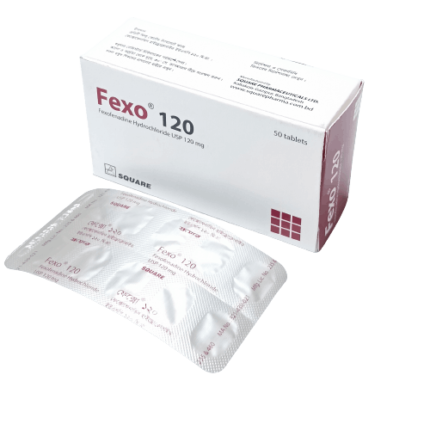Buflex 1000
300.00৳ Strip
- Buflex is an NSAID used to alleviate symptoms of osteoarthritis and rheumatoid arthritis.
- It reduces inflammation and pain by inhibiting prostaglandin synthesis.
- Available in different tablet strengths; use the lowest effective dose for the shortest time needed.
- Follow healthcare provider’s instructions, especially for patients with renal insufficiency or during pregnancy.
 Brand
Brand
|
Beximco Pharmaceuticals Ltd |
|---|---|
 Generics
Generics
|
Nabumetone |
 Type
Type
|
Tablet |
Indications
Buflex is prescribed to alleviate the symptoms associated with osteoarthritis and rheumatoid arthritis. Before initiating Buflex therapy, it is essential to weigh its potential benefits against possible risks and explore other available treatment options. For optimal results, use the smallest effective dose for the shortest duration that aligns with the patient’s treatment objectives.
Pharmacology
Buflex, containing nabumetone, is a non-steroidal anti-inflammatory drug (NSAID) known for its anti-inflammatory, analgesic, and antipyretic effects. Although the exact mechanism is not fully understood, it is believed that nabumetone’s ability to inhibit prostaglandin synthesis contributes to its anti-inflammatory action. Nabumetone itself is a prodrug that is metabolized in the liver into its active form, 6-methoxy-2-naphthylacetic acid (6MNA), which effectively inhibits prostaglandin production.
Dosage & Administration
Tablets:
- Nabumetone 500 mg & 750 mg: Oral administration.
- Nabumetone 1000 mg: Dissolve 1 tablet in 250 ml of water and consume the entire solution.
For Osteoarthritis and Rheumatoid Arthritis:
- Initial Dose: 1000 mg once daily, with or without food. Some patients may experience enhanced relief with doses up to 1500 mg to 2000 mg per day. Nabumetone can be administered as a single daily dose or divided into two doses. Dosages exceeding 2000 mg daily have not been evaluated. Use the lowest effective dose for chronic management.
For Renal Insufficiency:
- Moderate Renal Insufficiency: Start with a maximum of 750 mg once daily.
- Severe Renal Insufficiency: Begin with no more than 500 mg once daily. Dose adjustments up to 1500 mg and 1000 mg daily, respectively, may be made based on careful renal monitoring.
Pediatric Use:
- Safety and efficacy in children have not been established.
Note: Use medication only as directed by a healthcare professional.
Interactions
NSAIDs like nabumetone may reduce the effectiveness of ACE inhibitors. Patients on both medications should be monitored for potential interactions.
Contraindications
Buflex is contraindicated in individuals with known hypersensitivity to nabumetone or its components. It should not be used by those who have had asthma, urticaria, or other allergic reactions to aspirin or similar NSAIDs. Additionally, Buflex is contraindicated for managing peri-operative pain following coronary artery bypass graft (CABG) surgery.
Side Effects
Gastrointestinal: Diarrhea, dyspepsia, abdominal pain, constipation, flatulence, nausea, dry mouth, gastritis, stomatitis, and vomiting.
Central Nervous System: Dizziness, headache, fatigue, increased sweating, insomnia, nervousness, and drowsiness.
Dermatologic: Itching and rash.
Special Senses: Tinnitus.
Miscellaneous: Edema.
Pregnancy & Lactation
- Pregnancy: Category C. There are no adequate studies in pregnant women. Use only if absolutely necessary. Avoid use during the third trimester due to potential effects on the fetal cardiovascular system, particularly the closure of the ductus arteriosus.
- Lactation: Not recommended for breastfeeding mothers due to potential adverse effects on the infant.
Precautions & Warnings
Long-term use of NSAIDs like Buflex can lead to renal complications, including papillary necrosis. This risk is heightened in patients with conditions that affect renal blood flow or volume. Patients with compromised renal function, heart failure, liver issues, or those on diuretics are at higher risk. Discontinuing the NSAID usually results in recovery to the baseline renal function.
Overdose Effects
Symptoms of acute NSAID overdose may include lethargy, drowsiness, nausea, vomiting, and abdominal pain. Severe outcomes such as gastrointestinal bleeding, hypertension, acute renal failure, respiratory depression, and coma are rare. Anaphylactoid reactions may also occur. Treatment involves symptomatic and supportive care, with potential use of emesis or activated charcoal if within 4 hours of ingestion. Emergency measures such as forced diuresis and hemodialysis may be less effective due to high protein binding. Reported overdoses of up to 25 grams have been managed with standard emergency treatments without long-term consequences.
Therapeutic Class
- Medications for Osteoarthritis
- Medications for Rheumatoid Arthritis
Storage Conditions
Store in a cool, dry place away from light and moisture. Keep out of reach of children.













Reviews
There are no reviews yet.